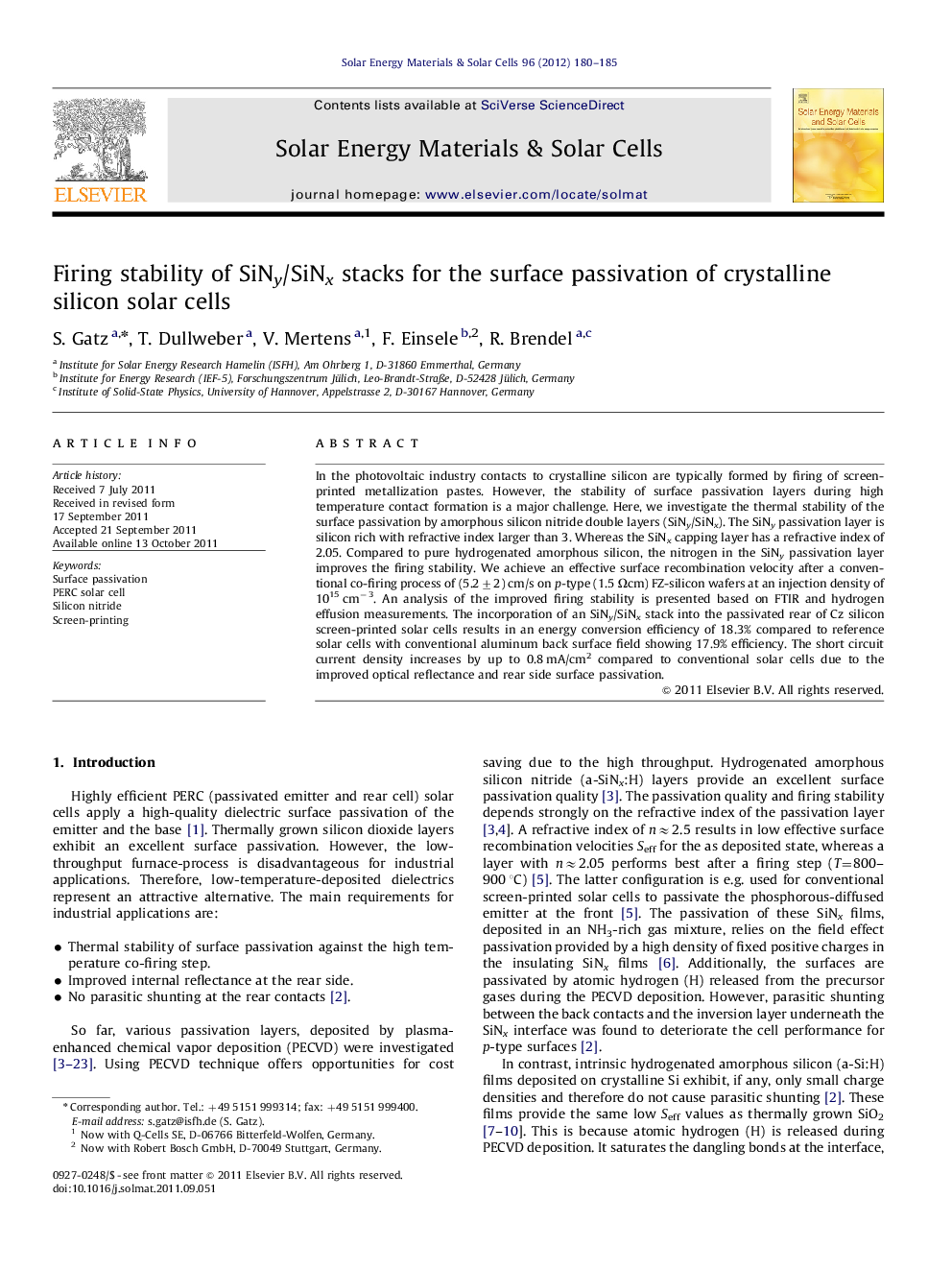| Article ID | Journal | Published Year | Pages | File Type |
|---|---|---|---|---|
| 79484 | Solar Energy Materials and Solar Cells | 2012 | 6 Pages |
In the photovoltaic industry contacts to crystalline silicon are typically formed by firing of screen-printed metallization pastes. However, the stability of surface passivation layers during high temperature contact formation is a major challenge. Here, we investigate the thermal stability of the surface passivation by amorphous silicon nitride double layers (SiNy/SiNx). The SiNy passivation layer is silicon rich with refractive index larger than 3. Whereas the SiNx capping layer has a refractive index of 2.05. Compared to pure hydrogenated amorphous silicon, the nitrogen in the SiNy passivation layer improves the firing stability. We achieve an effective surface recombination velocity after a conventional co-firing process of (5.2±2) cm/s on p-type (1.5 Ωcm) FZ-silicon wafers at an injection density of 1015 cm−3. An analysis of the improved firing stability is presented based on FTIR and hydrogen effusion measurements. The incorporation of an SiNy/SiNx stack into the passivated rear of Cz silicon screen-printed solar cells results in an energy conversion efficiency of 18.3% compared to reference solar cells with conventional aluminum back surface field showing 17.9% efficiency. The short circuit current density increases by up to 0.8 mA/cm2 compared to conventional solar cells due to the improved optical reflectance and rear side surface passivation.
Graphical AbstractFigure optionsDownload full-size imageDownload as PowerPoint slideHighlights► High thermal stability of SiN double layers demonstrated by effusion experiments. ► Silicon-rich passivation layer SiNy profits from increased Si–H binding. ► Nitrogen-rich capping layer SiNx increases firing-stability further. ► SiNy/SiNx applied at PERC solar cell rear: efficiency improvement of 0.4%.
